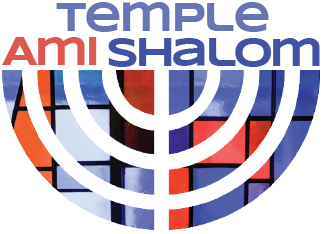Shavua tov everyone!!
What an interesting and important week we have this week. Thursday night and Friday is one of the most important days in modern Jewish history, Yom Yerushalayim, Jerusalem Day, and then on Shabbat we begin reading the 4th book of the Torah, the Book of Numbers, B’midbar.
Let’s go back to 1967…it seems so long ago!! I was in 10th Grade at Grant Hi in the Valley and I was looking forward to spending the summer in Israel on the BJE Ulpan Program. My middle brother was in Jerusalem studying in a Junior year abroad program while at UCLA. Things were getting dicey in the Middle East, Syria and Egypt got together to form the United Arab Republic, its goal was to squeeze Israel with military force. While Jordan was not technically part of the alliance, they had much more to lose if a war started with Israel. When the 6 Day War began in June, only Syria and Egypt were fighting against Israel. As is well known, Israel struck very quickly and disabled both Egypt’s and Syria’s forces. Israel spread its border all the way to the Suez Canal and took over the Golan Heights in Syria.
Then, suddenly, Jordan joined the fight at the last moment and shelled Jerusalem,and Tel Aviv. My brother was in the Post Office in the Western side of Jerusalem, the city was divided so that the Jewish population could not visit the Western Wall of the Temple Mount or any of the Jewish sites that existed long before the War of Independence in 1948. My brother made it back to his dormitory safely and the Israeli Army fought very hard to re-capture and re-unify Jerusalem as the Capital of Israel and extended Israel’s occupation to the Jordan River. It was an amazing week in modern Jewish history and I was able to travel to Israel on the Ulpan program. We were among the first Jews in many, many years to visit the Wall and all of Eastern Jerusalem. We also drove through the Gaza Strip and made our way up to the Golan Heights. It was an amazing summer and I am still close with many of my friends from that summer.
Today, we celebrate and enjoy having one Jerusalem and celebrating with Jews around the world the beauty, majesty and importance of our capital city, the city we bow towards whenever we pray together.
And now, on to B’midbar. The more I read about the book of Numbers and this week’s parasha, B’midbar, the more I realize how much I don’t know about it!! I always think that this entire book is about the Israelites and their long trek through the Sinai on their way to the Jordan River. In fact, much of it is NOT about that trek, we only really read about 2 of 40 years and the first several weeks we are still at Mount Sinai, we haven’t moved a mile. Another interesting item about Numbers is that time moves in an orderly way, but in fact, there are times in this book that we go BACK in time and then we move ahead again. Part of the book is history and part of the book is law. Part of the book is fighting our enemies as we make our way through the wilderness and part of it is about the struggles that Moses and God have with the Israelite people.
So then what is the main topic in B’midbar? My favorite ‘teacher’, as many of you know by now, is Rabbi Jonathan Sacks. Rabbi Sacks describes the variety of themes in this book so beautifully, “You do not understand a symphony by disaggregating its musical themes. It is precisely the way the score holds them together, often in tension and with shifts of mood, that constitutes the symphony as an artistic unit. Likewise with the Torah-with at least this difference: we have nothing to compare it to, not only in ancient religious literature, but among the other books of the Torah as well.”
As we consider this meaningful paragraph and its analogy between a beautiful musical piece and the Torah, consider another message about B’midbar from Rabbi Sacks, “there is nothing accidental about the mix of law and narrative in the Torah, nor is there anything haphazard about the structure of Numbers as a book. The Torah reflects the Israelite understanding of God as the unity beneath diversity. If all you can see is the diversity, not the unity, you do not understand it at all.”
On Shabbat we will spend more time delving into this week’s parasha and more of the specifics about the ebb and flow of B’midbar.
I hope to see many of you tonight at 7pm on Zoom as we spend some time with one of our TAS members, Debra Barrath, as she helps us understand how to make positive steps during this challenging coronavirus period. Of course, I also hope to see you this Friday night and on Shabbat morning as we greet and celebrate Shabbat together. It’s also the 4th Shabbat, so if any of you have any questions, I’ll take a little time on Shabbat morning to answer them. Please email me to rrresnick@aol.com or text me at (818)388-5580.
